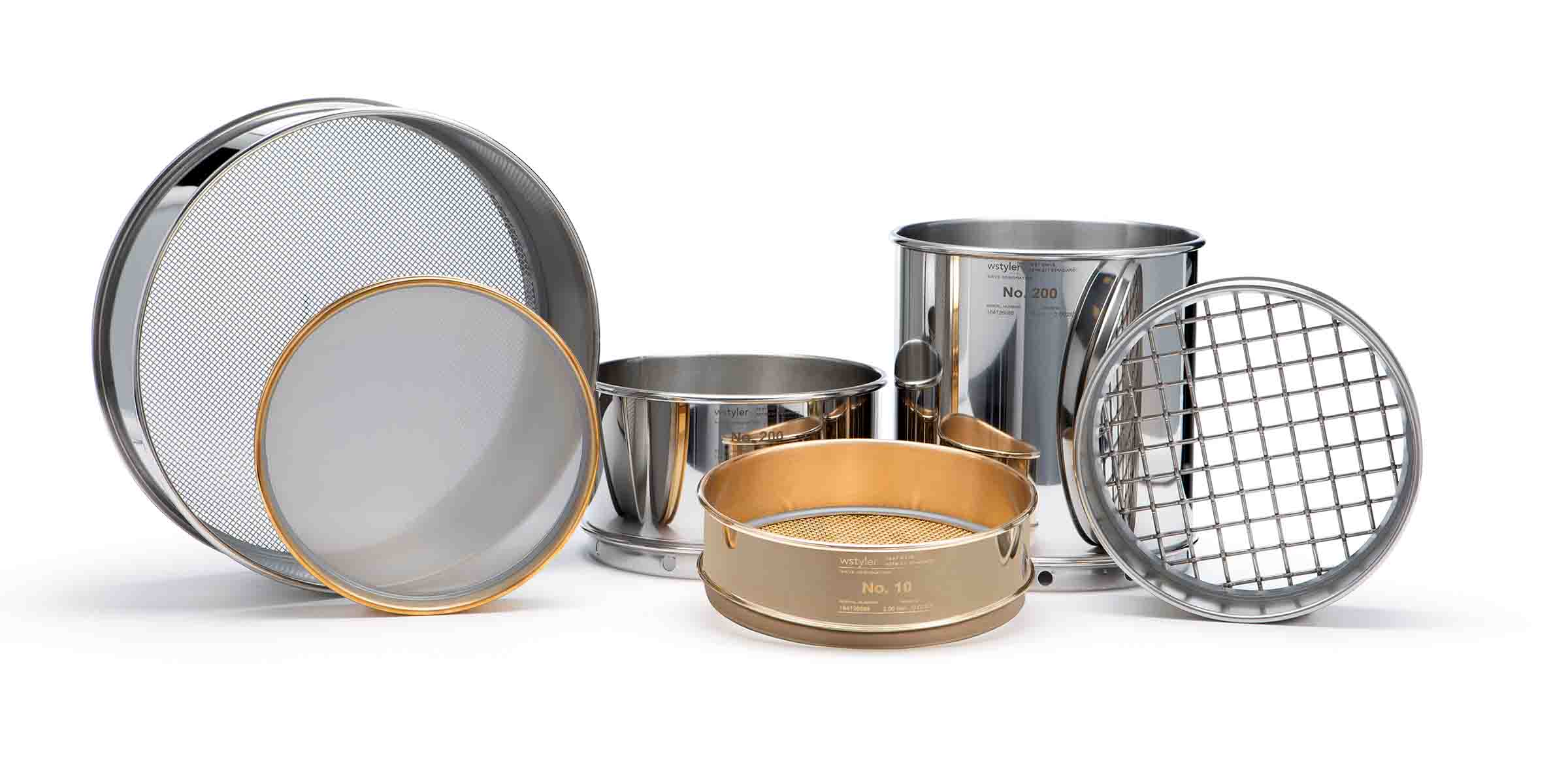Brass vs. Stainless Steel Test Sieves: Understanding the Differences
Test sieves and test sieve analysis have been utilized for decades to deliver consistent and repeatable particle analysis results to various industries. To ensure optimal results and sieve longevity are achieved, high-quality materials must be used to assemble your test sieves.
Now, when standardized test sieve analysis operations were implemented to test material before reaching consumers, Brass was the dominant alloy used. However, as time went on, we began to see stainless steel become the prominent test sieve variant that it is today.
Having said that, how do brass test sieves and stainless steel test sieves differ?
W.S. Tyler has been a prominent manufacturer of particle size analysis equipment for over 140 years and strives to help customers implement test sieve specifications that deliver the best results.
To that end, this article was written to be better explain:
- What a test sieve is
- The brass alloys often used to make test sieves
- The stainless steel alloys often used to make test sieve
- The pros and cons of using brass test sieves
- The pro and cons of using stainless steel test sieves
- The cost of both brass and stainless steel test sieves
What Is a Test Sieve?
To repeat one of our previous knowledge articles, a test sieve is an instrument that uses wire cloth with precise woven openings in it to separate some kind of particles from materials. A test sieve consists of a screen held in a round metal frame and comes in many different sizes and specs.
When used in a shaker, a stack of Test Sieves is a quality control tool used to measure the particle size distribution in a given sample. They are best suited for dry, free-flowing material.
The most important characteristics are consistent mesh openings and wire diameter. Test sieves are typically manufactured out of brass alloys or stainless steel.
What Brass Alloys Are Used To Construct Test Sieves?

Brass refers to the range of copper-zinc alloys. The various combinations of copper and zinc give brass materials different mechanical and corrosion properties.
Test sieves commonly found in the marketplace have either an 80/20 alloy combination or phosphor bronze. Brass frames in the market can be either red Brass, or yellow.
What Stainless Steel Alloys Are Used To Construct Test Sieves?

The mesh in stainless steel test sieves is from the 300 series, most commonly 304 and 316. Meshes in sizes US #8 through US #500 are all 316 stainless steel, with the other mesh sizes being woven in 304 grade. Stainless steel frames are also from the same 300 series. The most common in the field are 304, 305, or 316 stainless steels.
What Are the Benefits and Drawbacks of Using Brass?
Brass mesh is anti-sparking. One thing to remember is the most essential part of a test sieve is the consistency of the mesh opening.
Because brass material is softer, brass mesh will deteriorate more quickly than stainless steel. This can lead users to have to replace their test sieves more frequently to keep getting consistent results.
Users will also see discoloration of their brass sieves as the material is exposed to humidity. This discoloration does not typically affect the sieving results.
Brass test sieves were the most widely available in the beginning days of sieving over 100 years ago. Many companies still order brass test sieves because they are what they have always had in their labs.
With the expansion of availability of steel and the material becoming more affordable over the years, companies are finding it beneficial to make the switch to the stainless steel varieties to gain the benefit of their longer life span.
What Are the Benefits and Drawbacks of Using Stainless Steel?
Stainless steel test sieves are more durable than the softer brass material. Stainless steel mesh is more corrosion resistant and stands up better to abrasive materials.
Stainless steel is preferred in pharmaceutical and food applications, but industrial companies producing sand or diamond dust will also benefit from stainless steel sieves because of their durability and strength.
How Does Brass and Stainless Steel Affect Sieve Cost?
Our Brass framed test sieves, whether they contain Brass or stainless steel mesh, cost the same amount to purchase.
For example, an 8” all brass #100 test sieve and a brass frame, stainless steel mesh #100 both cost about $63. The 8” #100 with a stainless steel frame and stainless steel mesh costs about $74.
Balancing Your Sample Size and Sieve Diameter
Brass test sieves were once the preferred screening medium in test sieve analysis, as Brass was more readily available and affordable. But as its availability and affordability improved, stainless steel became the prominent material used to construct test sieves as it is far more durable.
That said, regardless of what alloy your test sieves are constructed out of, it is important that you implement a sieve diameter that is appropriate for the weight of your sample. Doing so further helps your particles properly make their way through your sieve stack.
For more than 140 years, W.S. Tyler has proudly supplied reliable test sieves, helping customers design test sieve stacks that are tailored to the material being worked with.
We put together the article “How Sieve Size and Sample Weight Affect Particle Size Analysis” to give you a better understanding of what sieve diameter you should use to achieve accurate and repeatable results.
About Candace Blaker
Candace is a product manager at W.S. Tyler that oversees all product lines that focus on particle size and characterization. This includes test sieves, lab equipment, computerized particle analysis, and screening media. She also leads the customer service team, assisting with technical questions and customer satisfaction. With 14 years of experience, Candace strives to help customers achieve their goals by eagerly getting to know their process and offering options that can help produce optimal results.



